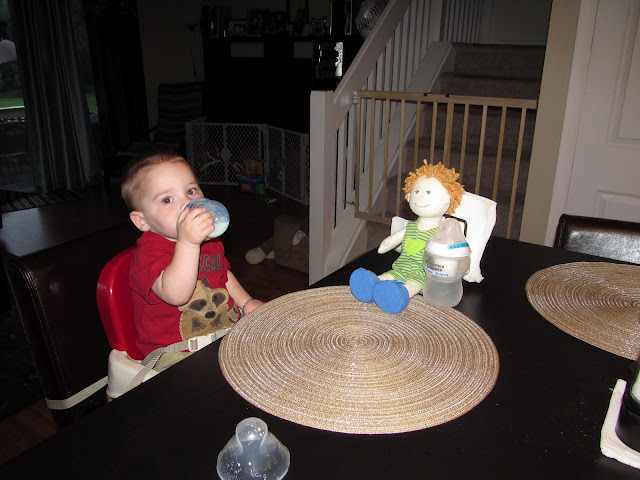Like any child, Aidan underwent lots of tests and doctor's visits to get to a diagnosis of his EGIDs. An upper GI was performed, to check for anatomical issues and problems like Delayed Gastric Emptying. That involved everyone waking up BRIGHT AND EARLY and making the trek to CHOP Exton. At this point, Aidan knows that being allowed to leave the house in pajamas is not a great sign. It usually means
procedure day.
I hate how tiny and scared he looks here. He actually did really really well. This was taken right before they gave him barium to drink. There were 2oz in the bottle and we were told he needed to drink at least 1/2 an ounce. My little champ drank all 2oz and cried for more.
Once he finished the barium, we had to hold him down (while he screamed at the top of his lungs, and YES, we do bring earplugs with us) for xrays.
Aidan's Upper GI was blessedly normal. It showed his reflux (we know) but nothing else. No deformities, no DGE, nothing else of any concern at all. What a relief - but not an answer.
Next, we scheduled a scope. A "scope" for Aidan is really an upper endoscopy and a colonoscopy, both with biopsies. Dr. Liacouras sends a camera in to examine his esophagus, duodenum, stomach, and colon. While he's in there, he takes small samples from several places in each area and sends them out to be examined under microscope. A child can look totally normal visually (Aidan did) but still have terribly high numbers of eosinophils (again, Aidan did).
Aidan's scope was done on December 14, 2011, when he was 11 months old. The procedure went very well. He had a blast in the waiting room and charmed all of his nurses. He's the bravest kid I've ever seen, really.
And you can't tell me you've ever seen a kid who looks cuter in CHOP jammies!
As we all know, Aidan's scopes were not normal. They were what led to his diagnosis of Eosinophilic Esophagitis (25 eosinophils per high powered field) and Eosinophilic Colitis (100+ eos per hpf).
This was what tied all of the pieces together. The pain, the screaming, the reactions to food, the failure to thrive, the refusal to eat. It all makes sense in light of what we now know.
I am thankful that we've found doctors who knew what to look for and how to help him. I'm excited to move forward. There may be no cure (yet!) but we
will make his life better!











































